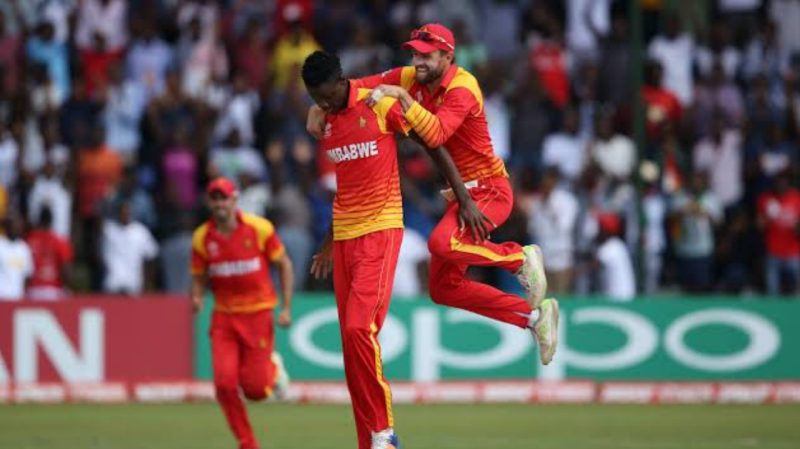The Worst Rule in Cricket History of All Time (2024)

Cricket has always been a sport that brings out the highest levels of thrill, strategy, and unpredictability. Yet, in a moment of shocking absurdity, the integrity of the game was compromised in just 12 minutes during the 1992 Cricket World Cup semi-final. In those few minutes, a match that had the potential to be one of the most thrilling spectacles turned into a tragic farce. It was a moment that would forever be etched in the annals of cricket history—a moment where greed and commercialization overpowered the spirit of the game.
South Africa’s Journey to the 1992 World Cup
To understand the magnitude of what happened on that day, we must start in 1991, when South Africa, after a 22-year exile due to its apartheid laws, was slowly making its way back into international cricket. The nation was yearning to regain its cricketing presence. The timing, however, seemed unfavorable. The apartheid laws had not been fully repealed, and South Africa’s inclusion in the upcoming World Cup in Australia and New Zealand was uncertain.
The African National Congress, led by Nelson Mandela, lobbied for South Africa’s inclusion in the World Cup. The International Cricket Council (ICC) agreed, but there was a catch: a referendum had to be passed in South Africa to end apartheid. If it failed, the South African team would be sent back mid-tournament. The pressure on the South African cricket team was immense; not only were they representing their nation, but they were also carrying the hope of a reborn country on their shoulders.
Against all odds, South Africa defeated defending champions Australia in their opening match. They showcased their talent and determination with breathtaking knocks and incredible fielding, making it all the way to the semi-finals. The referendum passed with 68.72% of the vote in favor of ending apartheid, and it seemed like the stars were aligning for a fairy-tale ending. South Africa was set to win it all and bring home the perfect gift for a new era in their country’s history.
1992 Cricket World Cup Semi-Final: South Africa vs. England
| Details | South Africa | England |
|---|---|---|
| Venue | Sydney Cricket Ground, Sydney, Australia | Sydney Cricket Ground, Sydney, Australia |
| Date | March 22, 1992 | March 22, 1992 |
| Toss | South Africa won the toss and chose to bowl | – |
| First Innings Total | – | 252/6 in 45 overs |
| Key Batsmen (Runs/ Balls) | – | Graeme Hick (83 off 90), Neil Fairbrother (75 off 94) |
| Key Bowlers (Wickets/ Runs) | – | Meyrick Pringle (2/36 in 9 overs) |
| Second Innings Target | 253 in 45 overs | – |
| Key Batsmen (Runs/ Balls) | Jonty Rhodes (43 off 38), Brian McMillan (21* off 21), Dave Richardson (13 off 9) | – |
| Rain Interruption | Match stopped due to rain at 22 runs needed in 13 balls | – |
| Revised Target | 22 runs needed off 1 ball (after rain rule applied) | – |
| Final Result | England won by 19 runs (D/L Method) | – |
| Notable Controversy | Application of the rain rule reduced the target to 22 off 1 ball | – |
| Player of the Match | Graeme Hick | – |
The Controversial Semi-Final: South Africa vs. England
The semi-final between South Africa and England was expected to be a classic. South Africa won the toss and, much to the surprise of everyone, decided to bowl first. This decision was a calculated risk. It was influenced by two controversial rules: the “rain rule” and the “time restriction” rule.
The Rain Rule: This rule, created to address rain interruptions, stipulated that the least productive overs from the side batting first were to be removed in case of a rain delay. For instance, if a team had bowled 10 maiden overs in their 50 overs, and rain reduced the second innings to 40 overs, those 10 maiden overs would be deducted from the second innings, keeping the target unchanged. This rule had already created multiple controversies in the tournament. In one case, England needed only 74 runs in 50 overs against Pakistan, but rain reduced the match to 16 overs, and their target became 64 runs. Although that match was abandoned, the absurdity of the rule was clear. Yet, South Africa’s captain decided to brave it.
The Time Restriction Rule: Another bizarre regulation that affected the game was the “time restriction” rule. Due to the immense commercial interests and broadcasting rights in Australia, a TV channel effectively dictated how long a match could go. The innings had to end by a specific time, or they would be cut short. During the semi-final, South Africa managed to keep England’s innings to 45 overs due to the time restriction, denying them the chance to play out their last five overs and potentially score more runs. The organizers could have intervened to extend the time, but such a decision would have cost money, and profits were prioritized over the integrity of the match.
The Final Moments: A Tragic Comedy
England, frustrated by these absurd rules, put on an incredible performance. Wicket after wicket, tight bowling, and unwavering determination pushed South Africa to 131 for 4 in 27 overs. Yet, South Africa fought back. Jonty Rhodes played a scintillating knock of 47 runs off 31 balls, followed by Brian McMillan and Dave Richardson adding 25 runs in the next 18 balls. The equation now stood at 22 runs needed from 13 balls—a thrilling finish was in the making.
Then, it started to rain.
The players walked off, hoping to return and finish the match. The entire cricketing world was glued to their screens, waiting with bated breath. Everyone hoped the game could continue, starting exactly where it left off. However, the broadcasting channel had a strict deadline. The match had to end by 10:10 PM, no exceptions. Even though the tournament rules allowed for a reserve day in such scenarios, and an exception could have been made given the ludicrousness of the rain rule, the broadcasters were adamant.
The rain rule was applied. The least productive overs for England were two brilliant maidens bowled by Meyrick Pringle. The crowd and players were initially informed that South Africa had seven balls to score 22 runs. As they took to the field, they were shockingly informed they now had only one ball left to score those 22 runs.
Pandemonium ensued. The crowd erupted in uproar. The South African batsmen were in disbelief. Even the English captain protested the sheer absurdity of the situation. But nothing could change the decision that had been made. Amid the jeers of the crowd, a dejected Brian McMillan faced the final ball. He played it, and the match ended with a whimper.
The Aftermath: The Day Cricket Died
The clock stood at 10:08 PM, two minutes before the deadline. The match was over, and so was the dream of South African cricket. Despite the heartbreak, the entire South African team displayed remarkable sportsmanship by shaking hands with the English players and performing a lap of honor for the fans who had supported them throughout the tournament. They accepted the outcome, stating that “rules were rules.” But these were rules dictated not by the spirit of cricket but by the greed of a broadcasting company.
A burgeoning cricketing powerhouse’s dreams had been dashed, not by the skill of the opposition, but by arbitrary rules designed to maximize profits. The 1992 World Cup semi-final stands as a painful reminder of the day greed killed cricket—a moment when a sport loved by millions was overshadowed by the pursuit of money.








